Rainbow Six Rework Impact: Changes, Operators & Meta Evolution
Updated On: November 20, 2025 by Aaron Connolly
Defining the Rainbow Six Rework Impact
Rainbow Six Siege reworks shake up how operators work, changing core gameplay and shifting the competitive meta. These updates hit everything from pro tournament tactics to casual matches, and honestly, you can feel the ripple effects everywhere in the community.
Understanding Gameplay Transformations
Rainbow Six Siege reworks flip the script on tactical gameplay. The recent shield rework? It’s a great example.
Shield operators like Montagne, Blitz, and Fuze can’t hip-fire anymore. That means no more quick damage while hiding behind your shield. On the bright side, Ubisoft gave them new tricks that totally change their place in a squad.
New shield abilities:
- Sprint while keeping the shield up
- Smash through barricades at speed
- Toss grenades without dropping the shield
- Free-look to peek around corners safely
The attachment rework changes how every operator handles weapons. Optics now fall into clear categories with specific perks. Iron sights let you aim down sights 10% faster, while universal 1x sights give a 5% speed boost.
Grip changes shake up movement:
- Angled grip: reload 20% faster
- Vertical grip: less recoil control
- Horizontal grip: move faster
These tweaks force players to relearn old habits. Defenders get fewer magnified optics, but attackers can now slap ACOG scopes on weapons that never had them.
Scope of Recent Updates
Ubisoft’s rework program keeps rolling out every season with big operator changes. Operation Collision Point turned Blackbeard into a shield operator, which—if you’re counting—is the fourth huge rework wave.
Before this, they gave Tachanka a full makeover and split Recruit into Striker and Sentry in Operation New Blood. Each rework tries to fix deep-rooted design issues as the game grows.
Recent updates cover:
- Full operator ability redesigns
- Overhauled weapon attachment systems
- Map tweaks and site balancing
- New anti-cheat measures
Year 9 Season 1 Operation Deadly Omen brought the biggest changes yet. Inactive players now have to win five non-ranked matches to get back into ranked. Newbies? They need to unlock ten operators per side and hit level 50.
The new Locker system overhauled cosmetics management, making it way easier to organize and favorite items.
LMGs got less recoil for everyone, but now slow you down by 10%. Operators like Fuze, Capitão, and Ying feel this change the most.
Community Reactions
The Rainbow Six community sure has opinions about reworks, especially when they mess with core gameplay. Shield rework debates light up Reddit and Discord, with players arguing about tactics and balance.
Some folks love the shield sprint and grenade throws. These help shield operators fit better in team plays. But losing hip-fire? That frustrates players who relied on it.
Positive feedback:
- More tactical options for shield users
- Better balance between attackers and defenders
- Weapon attachments make more sense now
Concerns people raise:
- Steeper learning curve for veterans
- Operators losing their unique feel
- Ranked restrictions feel harsh
Pro players and streamers break down every change on YouTube and Twitch. The community tests new stuff on the test server before it goes live.
Casual players seem to like the simpler attachment system, but competitive players argue about the best loadouts all the time.
Even with all the controversy, people keep talking and testing months after these changes drop. That says a lot about how much these reworks matter for both fun and strategy.
Key Changes in Operator Balancing
Operation Collision Point dropped some of the biggest operator balance changes in Rainbow Six Siege history. Ubisoft hit shields with hard nerfs and buffed Sens to make her more relevant.
Major Balancing Adjustments
Shield operators took the biggest hit. Ubisoft removed melee priority for shields, so now defenders can actually win those close-quarters fights.
If you guard back more than once, you’ll expose yourself behind the shield. Even Montagne isn’t safe when he tries to spam guard backs with his shield out.
Shields don’t deal damage when you hit enemies anymore. Suppression is easier to trigger too—just five bullets needed now, not ten.
Ubisoft listened to complaints about shields being too strong. Defenders finally have real counters to shield pushes.
Highlighted Balancing Updates
Sens got some much-needed buffs after being the least-picked attacker at high ranks. Her R.O.U. Projector System now does two key things.
Warden and bulletproof cams can’t see through Sens’ smoke walls anymore. That’s a big leg up over regular smoke grenades.
Sens can now turn her R.O.U. Projectors on and off manually, with each one running for up to 13 seconds. The battery doesn’t recharge, so timing matters more than ever.
Ying got nerfed with a two-second delay on her Candelas. Defenders can shoot them during this window, giving anchors a fighting chance against her pushes.
Implications for Competitive Play
These balance changes force new tactical approaches in ranked. Shield-heavy lineups just don’t work as well against organized defenders now. Teams have to rethink how they enter sites.
Sens is finally useful for site executes and retakes. Being able to toggle smoke walls opens up some wild new strategies. Teams can set up projectors on different sites and trigger them at just the right moment.
The Ying nerf changes late-round pushes. Defenders get a few precious seconds to reposition or pick off attackers, which slows down those wild rushes.
Pro teams will probably try Sens in new setups. Her improved gadget gives them another option besides the usual smoke-heavy plays.
Influence on Meta and Strategy
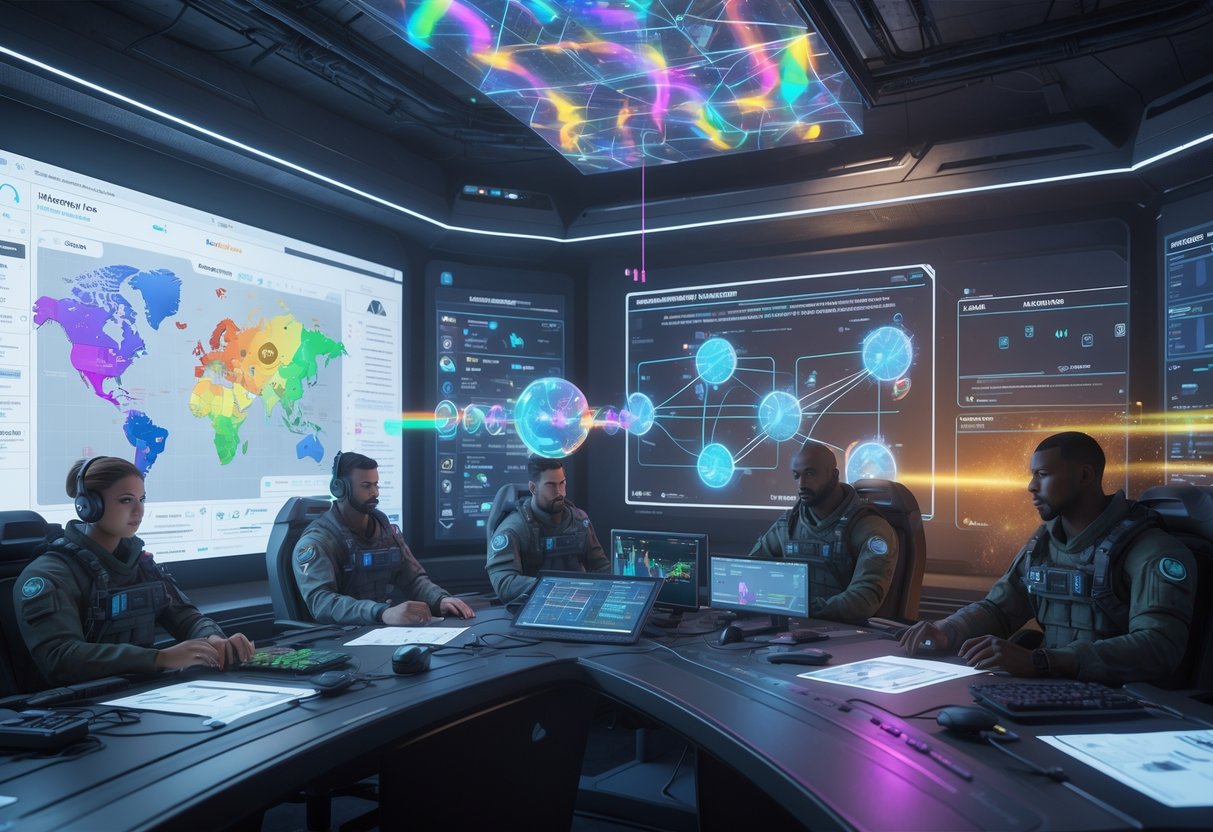
These reworks have really changed how teams play Rainbow Six Siege. Offense gets fresh opportunities, and defenders can’t just stick to old tricks.
Shifts in Attack and Defence Dynamics
Attackers now have to rethink their approach. Buck doesn’t get Hard Breach Charges anymore, so teams need to bring real hard breachers like Thermite or Ace. That pushes lineups into more specialized roles.
Ram lost her ITA12S shotgun, so she’s not as good up close. Teams now pair her with entry fraggers who can handle tight corners. She still brings massive destruction, but she needs backup.
Sledge moves faster now, so teams use him to rotate quickly between floors. His lower health, though, means you can’t just run in guns blazing.
Defenders had to adapt too. Kapkan swapped Nitro Cell for Barbed Wire, which slows down attackers and funnels them into his traps.
Lesion gets fewer mines now, forcing defenders to pick key spots instead of covering every inch. The slower refill rate means you won’t see as many late-round mines during clutch moments.
Emerging Team Compositions
Teams build their lineups around these changes. Buck needs a hard breach buddy, so you’ll see him with Thermite, Ace, or Hibana.
Popular attacking combos:
- Buck + Thermite + IQ
- Ram + Sledge + Thatcher
- Ash + Buck + Hibana
Defenders focus more on area denial than just fragging. Kapkan’s Barbed Wire works great with other utility operators. Teams stack his traps with Jäger’s ADS and Wamai’s MAG-NETs.
Oryx recovers from his dash faster now, so he can roam more. Pairing him with fraggers like Vigil or Caveira creates some nasty flanking threats.
Common defensive setups:
- Kapkan + Lesion + Jäger
- Oryx + Vigil + Pulse
- Lesion + Valkyrie + Maestro
Long-term Meta Evolution
Soft-breach roles keep evolving. Buck is the go-to for flexible vertical play, Sledge is all about mobility and precision, and Ram brings big area denial.
Slug shotgun nerfs hit several operators. Goyo and Kaid now have to play closer with the TCSG12 losing range, even though it hits harder up close.
The G36C got easier to control, so Ash and Iana might show up more. Players who like to take careful shots instead of rushing in will probably favor this.
Meta trends to watch:
- Teams need to coordinate utility better
- Attacks move faster
- Smarter mine placement
- Defenders get more creative with roaming
These reworks push Siege toward more thoughtful, tactical play. Teams that plan and coordinate shine, while solo fraggers might find it tougher to carry.
Operator-Specific Reworks and Outcomes
Recent operator reworks have shaken up how teams play Rainbow Six Siege. Each rework brings fresh challenges and changes how squads build their setups.
Fenrir Adjustments and Impact
Fenrir’s tweaks made him a lot more useful at higher levels. His F-NATT Dread Mine now rewards smart placement over random tossing.
His biggest upgrade is in intel gathering. Teams use Fenrir’s mines to set up info networks across multiple floors—especially on maps like Villa and Clubhouse.
He also got better recoil on the MP7. Pro teams pick Fenrir 23% more often since his changes. He’s a natural fit with Pulse and Vigil for heavy roaming strats.
Quick tip: Put Fenrir’s mines near drone holes to catch early intel.
Thunderbird Gadgets and Playstyle
Thunderbird’s Kona Stations got tweaked too. The healing speed dropped a bit, but the range went up by two meters.
Defenders now place Kona Stations in smarter spots. Common choices are above Oregon doorways or behind soft walls on Consulate. The extra range lets teammates heal without leaving cover.
She can now use the 1.5x scope on her Spear .308, making her a stronger anchor. Teams often play her with Jäger and Wamai for serious area denial.
Heads up: Don’t put Kona Stations right on attacker routes—they’ll just get destroyed.
With the longer cooldown, you need to time healing better. Wait until teammates take real damage before calling them back for a top-up.
Twitch and Strategic Value
Twitch’s drone rework turned her from a gadget-buster into more of an intel operator. Her shock drones don’t wreck defender gadgets as hard, but they’re way quieter now.
The F2 assault rifle got a bump from 37 to 42 damage per shot. That makes Twitch scarier in straight gunfights. Her pick rate jumped up 18% after these updates.
She now shines at gathering intel early in the round. Teams use her drones to spot roamers and call out setups. The quieter movement helps those drones stay alive longer.
Pros often save a drone for late-round pushes. That extra info during a site execute can make all the difference.
Blackbeard Remaster Significance
Blackbeard’s full rework stands out as the wildest operator change we’ve seen in Siege so far. Ubisoft took away his rifle shield and gave him a H.U.L.L. Adaptable Shield—basically, he’s got a full ballistic shield now.
Now, Blackbeard joins Montagne, Blitz, and Fuze as the fourth shield attacker. His new shield comes with bulletproof glass that covers his head when he deploys it. But when he aims, the glass folds down, so his head’s exposed while shooting.
This shield also acts as a breaching tool, letting Blackbeard break soft walls with four charges. That opens up some new tricks for vertical play and site takes. Blackbeard can still rappel with his shield, so holding windows could get pretty rough for defenders.
His MK17 CQB got some love too: it hits harder now (damage bumped from 40 to 44) and holds 25 rounds instead of 20. The catch? He loses his D-50 secondary.
Teams will probably have to rethink how they handle window control and shield strats in Rainbow Six Siege.
Significant Gadget and Equipment Changes
Rainbow Six Siege’s gadget reworks have really shaken up how people use secondary gadgets and utility. Ubisoft moved impact grenades around, tweaked barbed wire placement, and updated surveillance gear. All this has forced teams at every level to rethink their setups.
Impact Grenades Redistribution
Impact grenades don’t show up on as many defenders anymore. Ubisoft stripped impacts from a bunch of operators in recent updates. Now, teams lean more on Pulse and Vigil for opening sites.
Roaming feels different with these changes. Players have to coordinate with whoever still has impacts, and prepping sites takes longer without quick wall breaks.
Key operators affected:
- Jäger – Lost impacts, picked up barbed wire
- Wamai – Still has impacts, but only two
- Azami – Recently got impacts
With these shakeups, gadget management takes more planning. Teams really need to sort out utility before the round even starts.
Modifications to Barbed Wire
Barbed wire’s placement system got a solid overhaul. Now you can position it more precisely around doors and stairs. Players can stack wire more densely to create tougher choke points.
Wire placement improvements:
- Attaches to surfaces more consistently
- Easier for defenders to see
- Doesn’t clip through walls as much
Barbed wire feels more dependable for gathering intel now. If you pair it with proximity alarms, you can lock down sites pretty well.
Operators like Mute and Castle get the most out of these wire changes. Their gadgets just mesh better with the new wire mechanics.
Updates to Smoke and Proximity Alarms
Smoke grenades pop faster and cover more area now. That extra density lets attackers push sites with a bit more confidence. Defenders can’t see through the new smoke nearly as well.
Proximity alarms got audio upgrades and wider detection. They trigger more reliably when enemies get close, and the sound is easier to pick out if you’re wearing a headset.
Recent proximity alarm changes:
- Detection range: Up by 15%
- Audio clarity: Better directional sound
- Placement: More surfaces support alarms
All this makes it easier to gather info and predict enemy moves.
Introduction of New Modes and Features
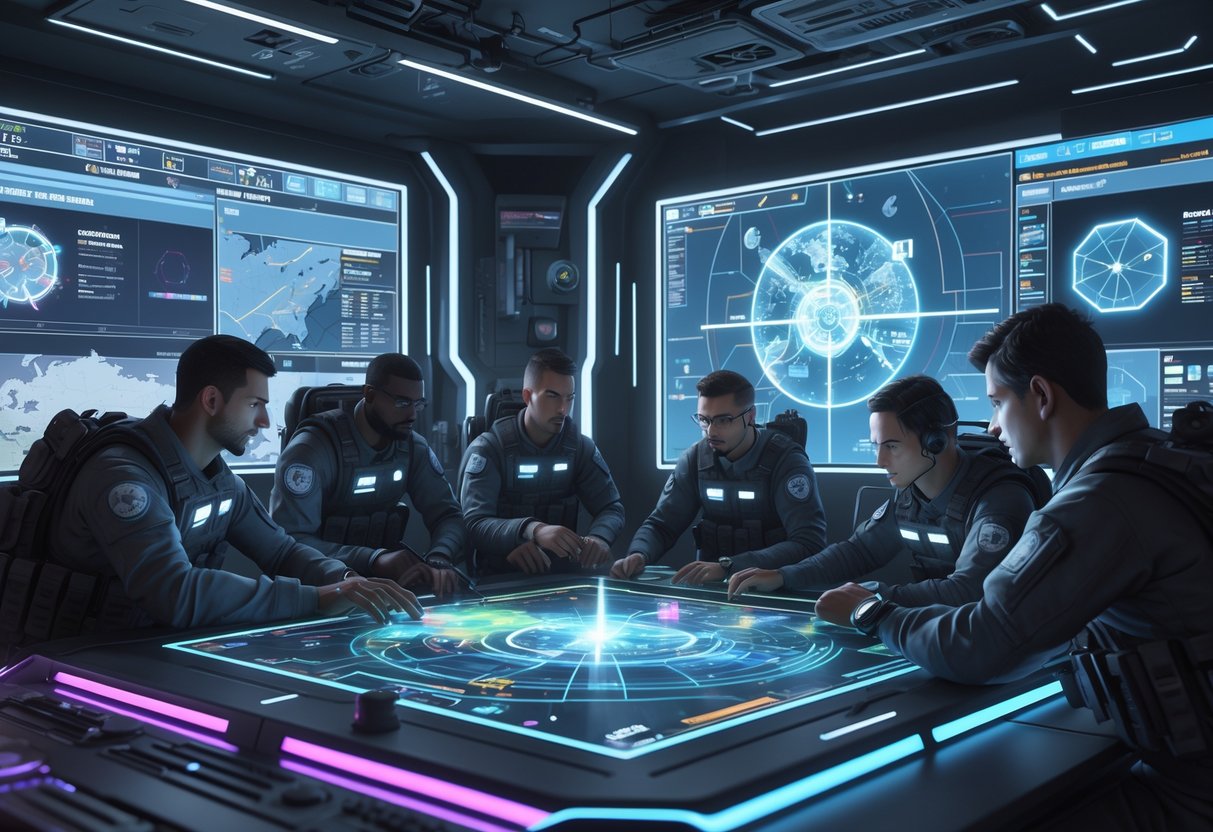
Rainbow Six Siege X shakes things up with big gameplay changes. Ubisoft brought in Dual Front, a 6v6 mode on the game’s largest map yet. Plus, they’re giving classic maps modern visuals and mechanics.
Dual Front 6v6 Mode
Dual Front bumps up team sizes to 6v6. The action goes down on Siege’s biggest map ever.
Objectives shift around as the match goes on. Teams fight for control of different sectors across a massive battlefield.
Key Dual Front Features:
- Six players per team
- Largest map in Siege history
- Multiple objectives active at once
- Sector control decides the winner
Season 3 added the Keres Safe Room assignment. Attackers have to extract data to 100% while defenders hold the sealed room. If the first entry points get locked, attackers can breach new paths.
The operator pool changes each season. In Season 3, Thermite, Montagne, IQ, Amaru, Kali, Grim, Doc, and Azami got pulled out. Ace, Rauora, Tachanka, Clash, Oryx, Solis, and Denari joined the lineup.
Map Modernisation
Ubisoft’s on a mission to update three maps each season until everything’s modern. The upgrades include destructible bits, sharper textures, and better lighting.
Season 3 gave Consulate, Nighthaven Labs, and Lair a facelift. The new destructible system makes matches feel way more dynamic.
Modernisation Updates Include:
- Destructible ingredients for smoother map flow
- Better textures and visuals
- Enhanced lighting
- Material tweaks for more immersion
Border and Lair also got modern versions for Field Training playlists. New players get to learn on updated maps right away.
The visual boosts bring old maps up to par. Players notice more tactical options and clearer sightlines thanks to improved destruction.
Crossplay and Beta Access
Rainbow Six Siege X rolled out with free access for new players. No need to buy in—just jump in and try the core gameplay.
Audio got a solid upgrade, too. Players say the new directional sound and environmental cues help with tactical calls.
Technical Improvements:
- Audio overhaul for better awareness
- Rappel upgrades with new moves
- Visual boosts across all modes
- Player protection against cheaters
Beta access lets people try features early and send feedback. Ubisoft uses that to fine-tune balance and mechanics.
The free model brings in new players, but old players keep all their progress. It’s a smart way to grow the community without leaving veterans behind.
Defensive and Offensive Balance
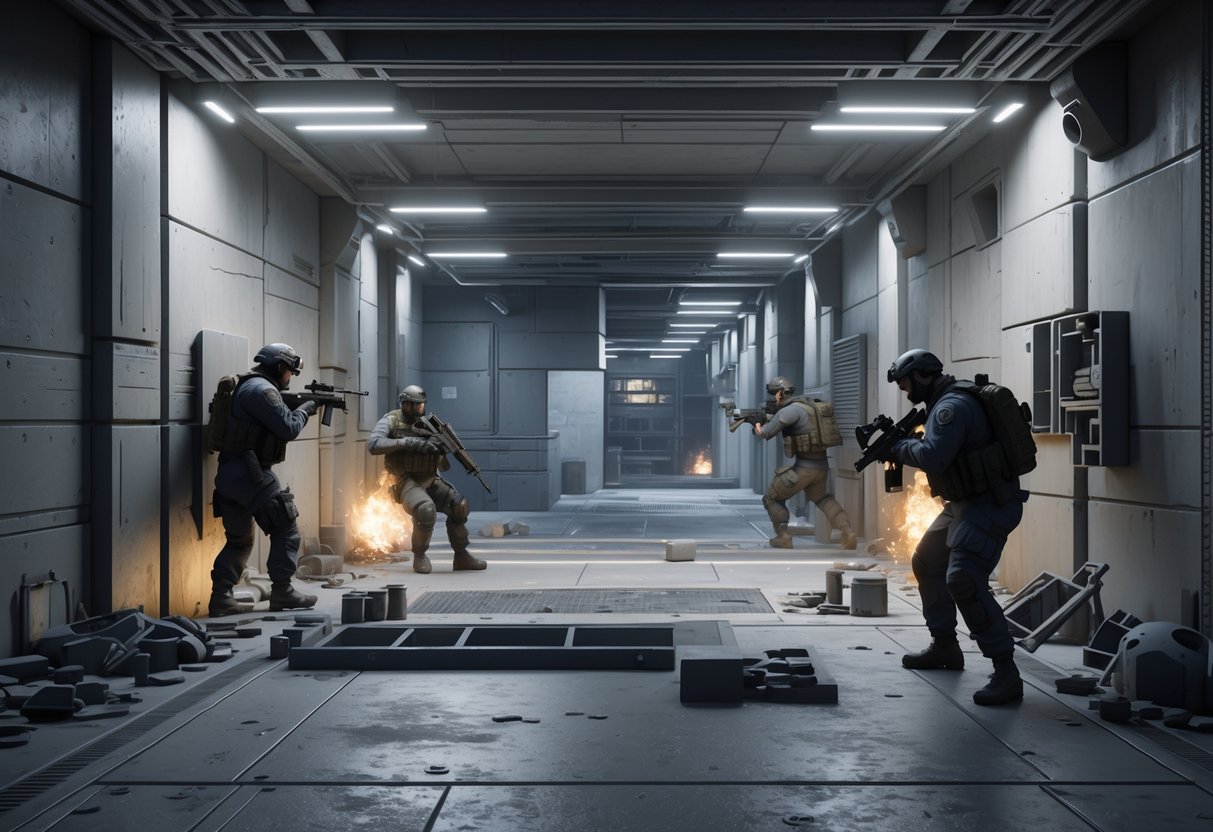
Recent reworks have really changed Siege’s tactical balance. Shield operators and defensive gadgets feel more flexible, while attackers got some new ways to break through. The meta now leans toward adaptable strategies instead of locked-in team comps.
Attacker Capabilities Post-Rework
Attackers deal with more unpredictable defenses now, especially after Clash’s rework and the shield changes. Shield operators can electrify shields remotely, so entry points might turn into traps at any moment.
Speedy operators matter more than ever. Fast attackers can dodge stationary gadgets better than the heavy ones.
Key attacker advantages:
- Nomad’s knockback knocks out shield placements
- Speedy ops slip past remote-activated traps
- Explosives clear out shields
Montagne and other shield ops can’t hip-fire anymore, so attackers feel safer pushing them in tight spots.
Teams often run two or three fast operators just to keep up with all the shield play.
Heads up: Don’t rely only on explosives—good defenders know how to bait breaching charges and set up shields out of reach.
Defender Adaptations and Counters
Defenders have embraced detachable shields and layered their setups. Clash’s CCE Shield now works well with trap ops like Kapkan and Lesion.
The new shield mechanics let defenders roam while still holding map control. Smart shield placement funnels attackers into predictable paths.
Defensive shield combos:
- Clash + Kapkan: Slow attackers down, then hit them with traps
- Shields + Lesion mines: Block off areas
- Remote shields + roaming: Delay attackers, then strike
Blackbeard and Blitz get picked more often now. Teams sometimes run multiple shield ops to overlap their defensive zones.
Clash’s new cone-shaped electric effect can zap multiple attackers at once. Coordinated pushes get a lot tougher.
Tip: Practice shield placement at common entry points. It’s a game-changer for winning defensive rounds.
Gadget Interactions and Counterplay
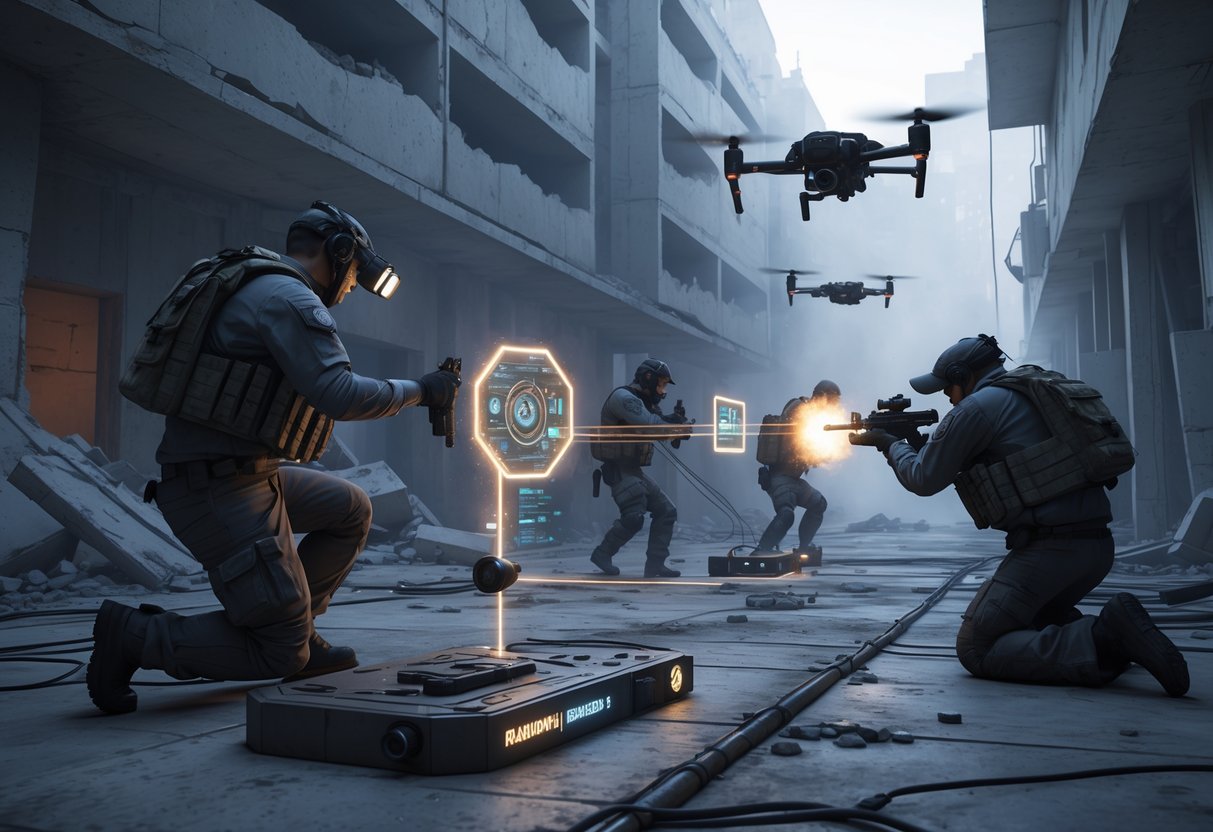
Gadget reworks have totally changed how devices interact with each other and the map. EMPs now mess with more electronics, and shields have new quirks thanks to R6 ShieldGuard.
EMPs and Environmental Effects
EMP grenades have become must-haves for attackers since the recent operator changes. Toss one, and you’ll knock out electronics for a few seconds—just enough to make a move.
Key EMP targets:
- Defender cams and monitoring gear
- Gadgets like Jäger’s ADS
- Environmental electronics on revamped maps
The EMP Impact Grenade works as a Thatcher backup for a lot of teams. You don’t need to bring Thatcher every time—just toss an EMP and go.
EMP effects now hit more gadgets, too. For example, Sens’ R.O.U. Projector System goes dark if you time your EMP right.
Heads up: EMPs don’t last long and don’t cover huge areas. Teams need to move fast before defenders reset.
Shields and R6 ShieldGuard Mechanics
Operation Collision Point brought big nerfs to shields and changed how people play defense. The biggest tweaks take away melee priority and add new exposure rules for shield ops.
Core R6 ShieldGuard updates:
- Consecutive guard breaks now expose shield operators
- Montagne’s big shield doesn’t protect everything anymore
- Shield damage removal means no more bashing attackers
- Suppression threshold dropped from ten bullets to five
Now, shield operators need backup to push. Montagne can’t just stand there forever—if he takes too many hits, he’s vulnerable.
The suppression system kicks in faster, so shields get pushed back by focused fire. Defenders can force shield users into cover if they coordinate.
Shield teams need to rotate and use smoke more to cover advances.
Player Comfort and Quality of Life Improvements
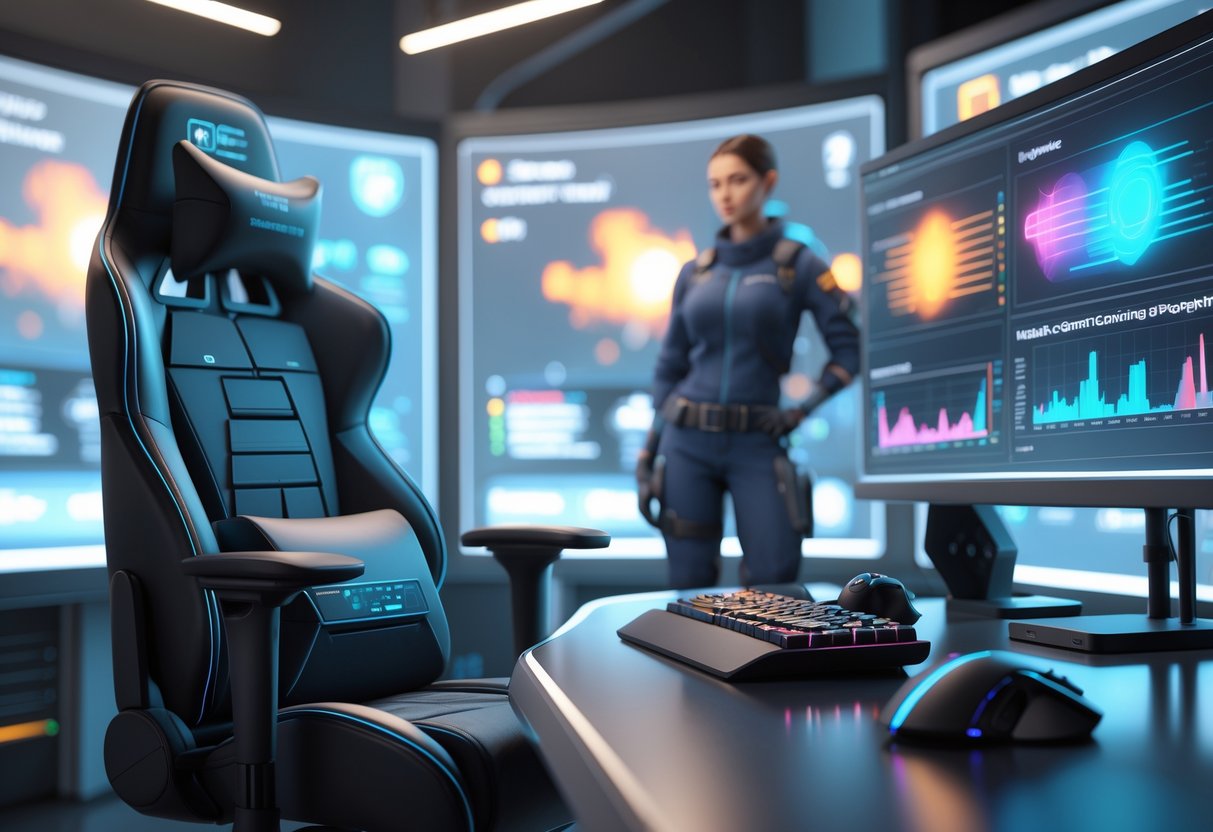
Lately, Rainbow Six Siege updates have focused a lot on making the game more welcoming. The devs rolled out new reputation systems, better anti-toxicity tools, and a cleaner interface to improve the whole experience.
Reputation System Updates
The Player Commendations system is a real shift—now, you can give out two commendations to teammates and one to an opponent every match.
There are three commendation types:
- Valour: For chill, fun teammates
- Dedication: For reliable players who share info
- Guidance: For those who lead and help with strategy
If you rack up a Commendation Streak, you’ll get rewards like more Alpha Packs and exclusive seasonal goodies.
You can only commend the same teammate once every seven days, so it doesn’t turn into mindless trading.
The new Reputation section has two pages: Commendations (tracks your praise and streaks) and Misconduct (shows what’s hurting your rep).
Anti-Toxicity Initiatives
Ubisoft added privacy settings so you can hide your Commendation Streak if you’d rather not show off.
The Misconduct page now gives clearer feedback about toxic behavior, so you know exactly what’s dragging down your reputation.
Quick tip: Turn on privacy if you want rewards but don’t want extra attention.
You can even commend opponents now, which adds a bit of sportsmanship to matches.
The system encourages people to recognize good behavior, not just avoid bad stuff. It’s a small thing, but it helps build a better community.
User Interface Enhancements
This season, squad management feels way smoother. Now, squad leaders just kick players right from the in-game profile. Promoting others to leadership? You can do that mid-match, no need to leave.
Match Replay and Spectator modes finally have Free Camera. You can watch the action from any angle or distance you like. Both modes let you hide the HUD for cleaner clips.
You’ll find in-game patch notes in the Notifications section now. There are direct links to R6Fix, so reporting bugs or giving feedback is quicker than ever.
Warning: Cross-save features aren’t identical across platforms. Operator loadouts sync between consoles, but not between consoles and PC.
If you’ve got multiple graphics cards, new GPU selection options help you optimize your setup. The defuser pickup system now lets you choose between automatic, manual, or both.
Cross-save now shares visual customizations, gameplay options, progression, and matchmaking preferences everywhere. Console players also get operator loadout syncing between Xbox and PlayStation.
Mousetrap and Device Integration
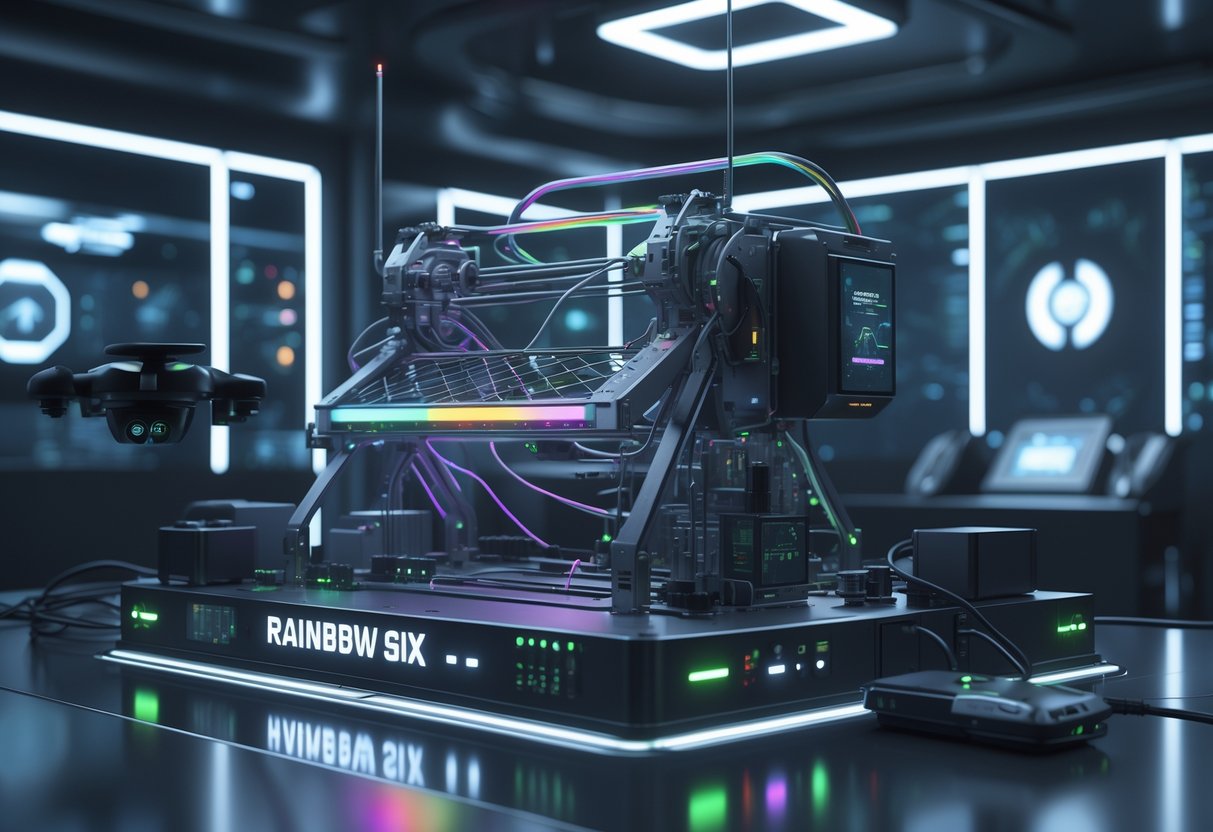
Ubisoft’s MouseTrap system takes a bold approach to keeping console play fair. It targets unauthorized mouse and keyboard adapters, but lets legit controller users play without hassle using smart device detection tech.
Effects on Cross-Platform Fairness
MouseTrap has really shaken up competitive play for console Rainbow Six Siege fans. The system cut mouse and keyboard usage by 78% overall and 73% in Ranked matches.
That’s a huge step towards fairer matches. Console players used to face off against folks using XIM adapters or similar gadgets, which gave them unfair aiming. These things spoofed controller inputs but let people use a mouse for pinpoint shots.
But it’s not just about the numbers. 43% of penalized players switched back to controllers or just moved to PC after MouseTrap caught them. That’s a sign the system actually discourages cheating instead of just punishing it.
Esports tournaments on console get fewer complaints about input advantages now. Teams focus more on strategy and teamwork, not on whether someone’s cheating with weird hardware.
If you’re in console tournaments, MouseTrap means your controller skills can finally shine—no more worrying about device spoofers.
Technological Advancements
MouseTrap hits cheaters with input lag when it catches unauthorized adapters. Instead of just banning people, it makes cheating annoying and pretty much useless.
The system spots device spoofing patterns but leaves regular controller players alone. If MouseTrap finds a XIM or similar adapter, it bumps up the response time so the advantage disappears.
A lot of industry folks call this an innovative way to handle cheaters. Rather than hunting them down, MouseTrap just makes cheating not worth it. Players get instant feedback that pushes them toward fair play.
Ubisoft expected a 30-50% reduction, but MouseTrap actually did better. That shows how sharp the tech is at telling real and fake inputs apart.
Warning: Cheat makers are having a tough time getting around MouseTrap. Some have even stopped making Siege cheats altogether.
Competitive Events and Community Engagement
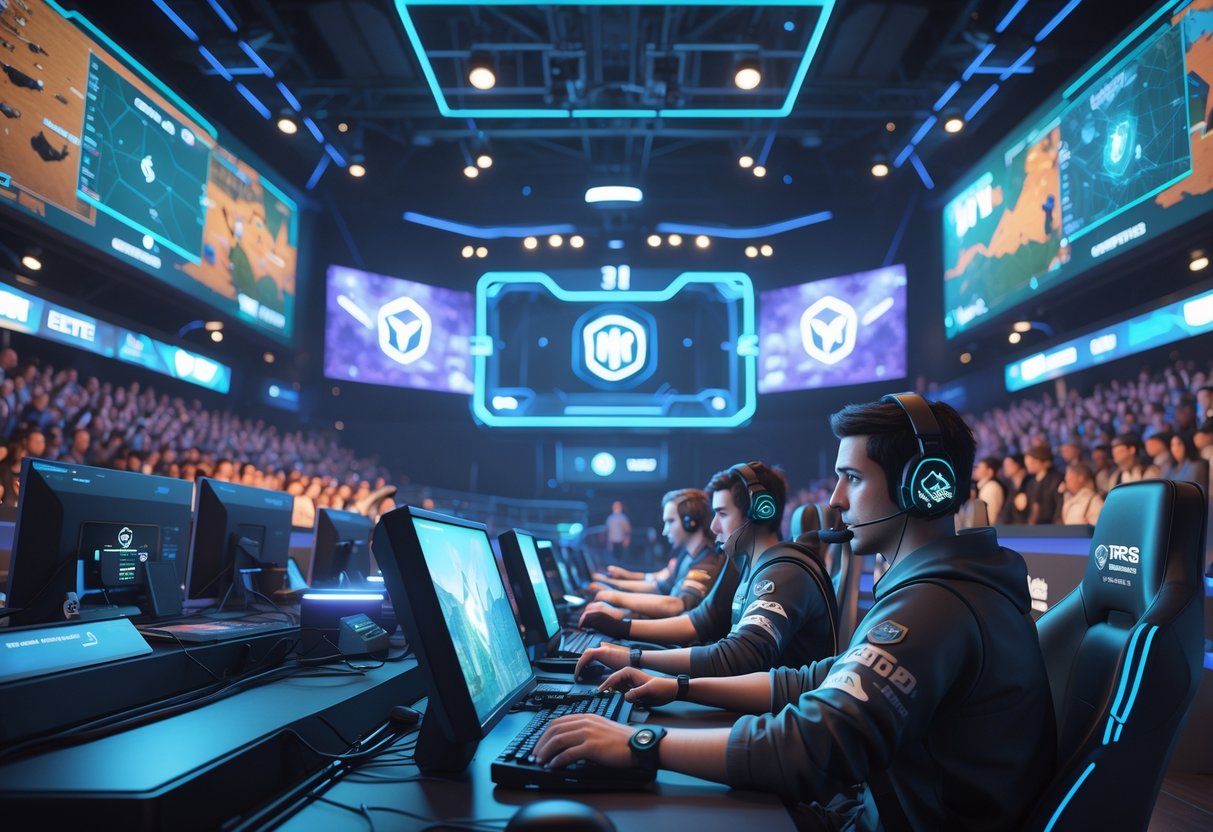
The Rainbow Six rework has totally changed tournament operations and how players connect with events. New tournament formats and better viewer rewards make the esports scene way more approachable, whether you’re a casual fan or a die-hard competitor.
Siege Cup Innovations
The Siege Cup got some big upgrades that make things more exciting. New tournament brackets now have multiple skill levels, so amateur teams can really compete with the pros.
Organizers shortened match formats to keep everyone interested. Rounds last just 90 seconds now, down from three minutes. Matches move faster, but you still get that classic Siege strategy.
Prize pools jumped by about 40% for all tournament levels. The main Siege Cup now hands out £500,000 in prizes, and regional qualifiers give £50,000 each.
Community feedback drove these changes. Players complained about long waits, so organizers added warmup periods and sped up map transitions.
Esports Scene Adjustments
Pro teams now have the Challenger Series for Tier 2 play. Up-and-coming players get a shot at the big leagues without diving into elite tournaments right away.
The Kick-off event starts each season, and now it actually affects rankings. Before, it was just for show.
Regional representation grew, too. More European and Asian teams get in, with 16 teams per region instead of 12. That means more local talent has a shot.
Training facilities teamed up with tournament organizers for bootcamp opportunities. Teams can practice in a pro environment before big events, which helps level the playing field.
Twitch Drops and Viewer Incentives
Twitch integration feels way more rewarding now. Watching streams unlocks exclusive operator skins, weapon charms, and Alpha Pack credits straight to your account.
The drop system kicks in every 30 minutes of viewing. Before, you had to watch for two hours, which was a lot to ask.
Viewer challenges add some fun. Predicting round winners or MVPs scores you bonus rewards on top of regular Twitch drops.
Partnership rewards aren’t just cosmetics anymore. You can earn Renown boosters and Battle Pass tiers by watching tournaments regularly. That’s actually useful for active players.
Stream quality got a boost, too. Multi-camera angles and player perspective modes let you switch between tactical overviews and individual player feeds during key moments.
Frequently Asked Questions

Players have a lot of questions about recent operator changes, especially around balance and the more controversial reworks. Some folks are excited about fresh gameplay, but others worry about changes to their old favorites.
What are players’ thoughts on the recent changes to Blackbeard?
People have mixed feelings about Blackbeard’s rework. Some are glad Ubisoft finally fixed his shield mechanic, which frustrated just about everyone.
Most agree his old design was bad for the game. His face shield let him tank headshots, which made fights feel unfair.
But Blackbeard mains aren’t thrilled. They say the rework took away his unique playstyle.
New players seem okay with it. They think his new kit is easier to use and less annoying to play against.
How has the rework of operators affected gameplay balance in Rainbow Six?
Operator reworks have really changed the meta. Clash’s rework lets her drop her shield on the ground, opening up new defensive strategies.
She can sprint with the shield now, making her more mobile. That helps defenders rotate and break through barricades faster.
Since her shield doesn’t deal damage anymore, players have to rely on teammates to finish off slowed enemies.
Shield counters like Sledge and explosive operators still work. That keeps old counter-play options alive while bringing new tactics into play.
Can we expect any further adjustments to the reworks introduced in the latest Rainbow Six patch?
Ubisoft keeps a close eye on reworked operators after launch. If someone’s too strong or too weak, they’ll probably tweak things soon.
The dev team uses feedback and analytics to spot issues. They’ll adjust damage, cooldowns, or movement speed as needed in the first few weeks.
Major changes usually show up in mid-season patches or the next season. Ubisoft likes to make gradual tweaks instead of big overhauls right away.
Community feedback matters a lot here. Players reporting issues through official channels help decide which operators get attention.
What strategies should we consider following the rework to optimise team performance?
Communication gets even more important with reworked ops like Clash. Teams should coordinate around her placed shields to get the most out of them.
Try pairing Clash with operators who can take advantage of slowed enemies. Vigil or Caveira can flank while opponents deal with the shield.
Attackers should bring several counter-operators when facing reworked defenders. Explosives and shield counters give you more options.
Practice new operator mechanics in casual matches first. Getting the timing and positioning right takes some trial and error.
How has the community reacted to the updates in the Rainbow Six operator reworks?
The community seems split on the recent operator reworks. Competitive players mostly support changes that improve game balance and cut down on frustrating mechanics.
Casual players aren’t as happy about major changes to familiar operators. They’d rather see smaller tweaks that keep each operator’s core feel.
Content creators have praised the Clash rework for adding new strategic options. Many point out how her new abilities shake up team comps and defensive setups.
Reddit threads show a mix of excitement for fresh gameplay and concern about power creep. Players are definitely engaged and sharing feedback everywhere.
Are there any specific rework decisions that have been particularly controversial among Rainbow Six gamers?
Shield operator reworks really stir up the most controversy in the Rainbow Six community. People get passionate about big changes to operators like Blackbeard and Clash.
Some folks think Ubisoft goes too far with these updates instead of just tweaking things here and there. They’ll say that full reworks strip away gameplay features that players actually love.
When Ubisoft took away Clash’s shield damage, it split the community. Some players welcomed the balance, but others felt like she lost her edge.
The timing of these reworks can also frustrate people, especially when they drop right before major tournaments. Pro players often scramble to adjust to operator changes in the middle of a competitive season.

